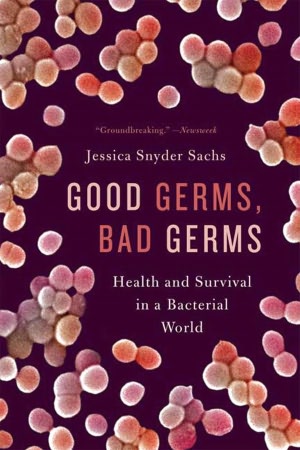Good Germs, Bad Germs: Health and Survival in a Bacterial World download
Par warner richard le jeudi, décembre 3 2015, 23:51 - Lien permanent
Good Germs, Bad Germs: Health and Survival in a Bacterial World. Jessica Snyder Sachs
Good.Germs.Bad.Germs.Health.and.Survival.in.a.Bacterial.World.pdf
ISBN: 9781429923293 | 304 pages | 8 Mb

Good Germs, Bad Germs: Health and Survival in a Bacterial World Jessica Snyder Sachs
Publisher: Farrar, Straus and Giroux
Names but the contribution of those 242 American men and women, who were willing to share the intimate details of their microbial profile with the world, is having a profound impact on our understanding of health and illness, and is even raising questions about what it means to be human. Mention bacteria, and most people think of germs and disease. The book is all about bacteria. You know you want to!) This week, I finished the book Good Germs, Bad Germs: Health and Survival in a Bacterial World by Jessica Snyder Sachs. It's the name of a completely different book which should be of great interest to anyone whose diabetes is autoimmune in origin. �Without it Bacteria, meet silica sponge. In my posts for this week and the next I'll be exploring the profound effects Triclosan has on human health, the environment, and antibiotic resistance, all to answer the (deceptively) simple question: is antibacterial soap bad for you? Good and bad bacteria: one study found that faecal transplants were more effective than conventional antibiotics in treating recurrent infection by Clostridium difficile (above). Germs, both good and bad, just want to survive; just like us. (The short It's a fairly straightforward process: no matter how well you wash your hands, you're never going to clean off all of the bacteria, and there will always be some that survive the deluge of soap, Triclosan, and water. I think Jessica Sach's book, Good Germs, Bad Germs: Health and Survival in a Bacterial World, is a great overview of the subject and very accessible for the non-medical person. In recent years, more awareness has been growing about “pro-biotic” diets and lifestyles; one that introduces “good” bacteria into the body. And it's a good read, if you enjoy biology and medical stuff. �But,” says Wackett, “in fact there are only a handful of disease-causing bacteria as compared to millions that do good in the environment. Last month the Book Club read Jessica Snyder Sachs' Good Germs, Bad Germs: Health and Survival in a Bacterial World. Germs.jpg The subtitle of Good Germs, Bad Germs is Health and Survival in a Bacterial World. To find out, we interviewed Jessica Snyder Sachs, author of Good Germs, Bad Germs: Health and Survival in a Bacterial World. That's what I took away from Good Germs, Bad Germs by Jessica Snyder Sachs. In fact, when you look up the word germ, the definition of “microbial organism” is usually followed up with “especially a disease-causing microbial organism.” with products that tout their effectiveness at killing “99.9% of germs and bacteria”. An examination of Jessica Snyder Sach's recently published science book Good Germs, Bad Germs: Health and Survival in a Bacterial World. But are all germ-killing products really protecting us in the long run? �We use five trillion cubic feet of gas in the process that makes fertilizers world-wide,” explains Larry Wackett, Ph.D., of the University of Minnesota's Department of Biochemistry, Molecular Biology and Biophysics.
